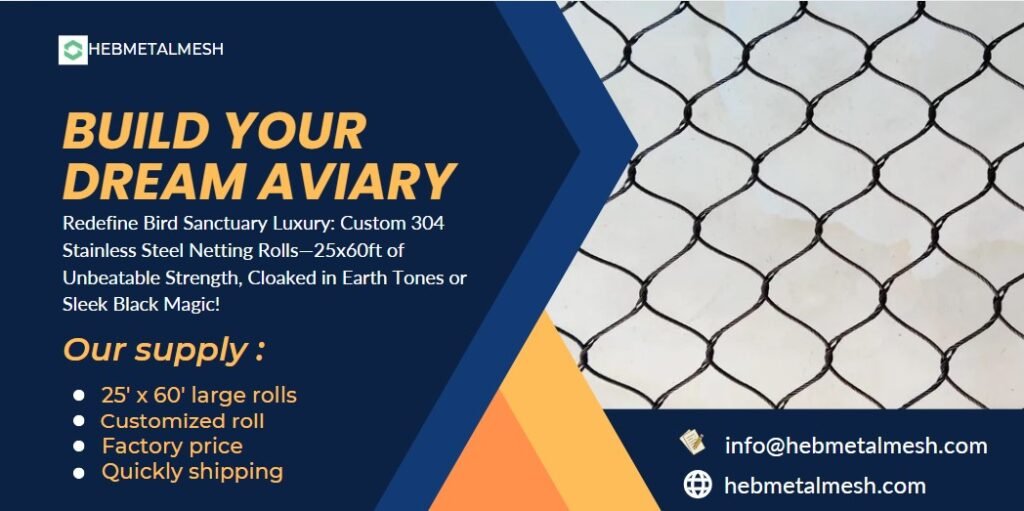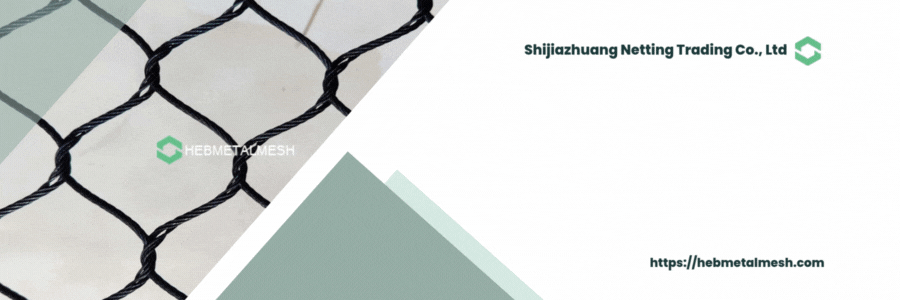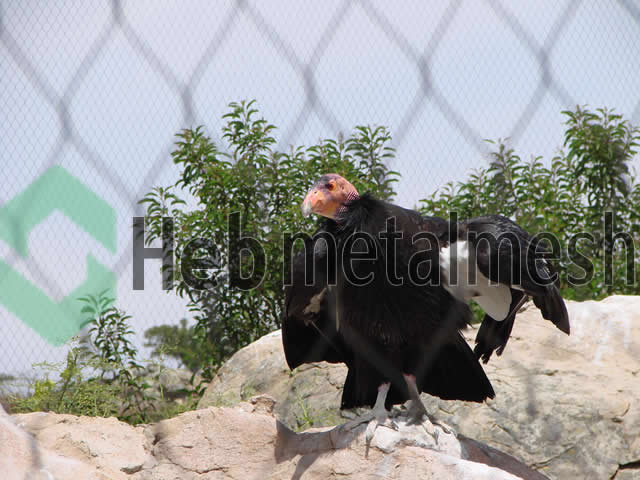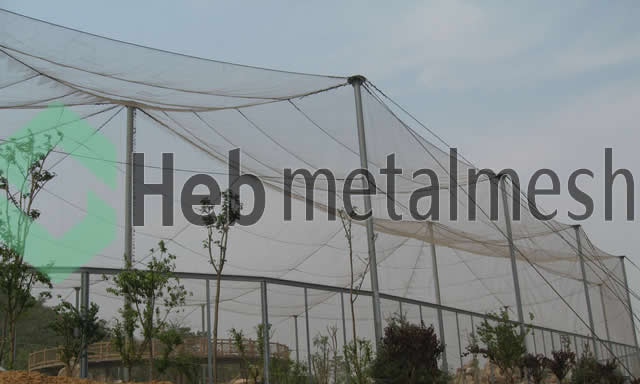Introduction to Bird Aviaries
A bird aviary is an enclosed space designed to house a variety of bird species, allowing them to fly freely within a controlled environment. Unlike traditional birdcages, aviaries provide ample space that mimics the natural habitat of birds, promoting their well-being and creativity. These flying sanctuaries can range from simple, small structures in a backyard to elaborate installations in wildlife parks and botanical gardens.
The significance of bird aviaries extends beyond mere aesthetics; they serve as vital tools for conservation and education. According to the American Birding Association, well-constructed aviaries can play a crucial role in the rehabilitation of endangered species and facilitate breeding programs aimed at preserving biodiversity. By creating an environment where birds can thrive, aviaries not only support individual species but also contribute to broader ecological efforts. Additionally, they provide valuable educational experiences, allowing visitors to learn about different bird species and the challenges they face in the wild.
Keeping birds in aviaries also offers personal enjoyment and a unique sense of connection with nature. Observing birds interact, bathe, and engage in flying can be a source of endless fascination and tranquility. Moreover, maintaining an aviary encourages owners to dive deeper into avian care, fostering a greater appreciation for these remarkable creatures. The interaction not only benefits the birds and aviary owners but also promotes mental well-being through the joy of watching birds in a safe and nurturing environment.
Constructing a bird aviary requires thoughtful planning and precise execution to ensure that the birds’ needs are met and that they live in harmony. This guide will offer insights into the essential components and considerations for creating an enriching space that ensures the health and happiness of its avian inhabitants.
Designing Your Dream Aviary
When embarking on the journey of constructing a bird aviary, several critical design elements must be meticulously considered to create an environment that is both functional and appealing. The size of the aviary is one of the first aspects to address; generally, a larger space is preferable, allowing for ample room for the birds to fly and exhibit natural behaviors. It is essential to take into account the species being housed, as different birds have varying space requirements. For example, larger species such as macaws require a more expansive aviary compared to smaller finches or budgerigars.
The shape of the aviary also plays a pivotal role in the overall design. Rectangular aviaries are a popular choice due to their efficient use of space, but circular or hexagonal shapes can be visually striking and provide unique flying paths for the birds. Each design option presents different benefits and potential aesthetic appeal, so it is important to consider what fits best in terms of the landscape and style of the installation area.
Another vital factor is the selection of location. Ideally, a bird aviary should be situated in a location that receives a balanced amount of sunlight while also providing shade. Natural elements around the site can enhance the aviary’s atmosphere, helping to mimic the birds’ natural habitat and making them feel more at home. When planning the location, ensure accessibility for maintenance and monitoring of the birds, while also considering the safety from potential predators. Incorporating these key elements into the design will not only ensure that the bird aviary is visually appealing but also provide the best possible environment for the avian inhabitants, allowing them to thrive and flourish.
Constructing Your Aviary: Materials and Techniques
The construction of a bird aviary necessitates careful consideration of materials and methods to ensure a safe and comfortable environment for the birds. Selecting the right structural components is fundamental. The frame of the aviary can be constructed from treated wood, aluminum, or galvanized steel, which are all weather-resistant and provide the necessary strength to withstand external elements. Each material offers different advantages; wood, for instance, is aesthetically pleasing but may require additional maintenance to prevent rot, whereas aluminum is lightweight and resistant to corrosion.
For the flooring, it is essential to choose materials that facilitate cleanliness and comfort. A combination of gravel, sand, or grass can be used, depending on the type of birds housed. Gravel or sand allows for proper drainage and easy cleaning, while grass may contribute to a more natural habitat feel. Additionally, incorporating soft landing surfaces can provide gentle footing for birds that require it. It is also advisable to avoid sharp or rough surfaces that could potentially harm the aviary’s residents.
A crucial aspect of bird aviary construction is the choice of netting. Long-lasting aviary netting, such as hebmetalmesh, offers durability and security against predators while allowing adequate airflow and sunlight. Experts recommend using this type of netting as it is resistant to UV rays and wear, ensuring longevity. Avian specialists highlight that quality netting contributes greatly to the overall safety of the birds, as it serves as a barrier against potential threats from outside while enabling free movement within the enclosure. In summary, investing in high-quality materials not only enhances the structural integrity of the aviary but also ensures a thriving environment for the birds.
The Importance of Aviary Netting

Aviary netting is a critical component in the construction and operation of a bird aviary, serving not only as a physical barrier but also as a safeguard for the well-being of its avian inhabitants. Selecting high-quality aviary netting, such as those made from durable materials like hebmetalmesh, ensures that birds are protected from external dangers while also preventing escapes. This protective measure is paramount for the long-term health and safety of various bird species housed within the enclosure.
The choice of netting material significantly affects the durability and effectiveness of the aviary’s design. High-quality materials must withstand weather conditions, resist UV degradation, and endure physical stresses imposed by wild animals or accidental bird collisions. Aviary netting also plays a vital role in preventing injury, as softer mesh options can reduce the risk of entrapment or harm to birds as they fly. According to Avian Specialists Inc., “the right netting can profoundly influence not just the safety of birds but also their overall comfort and ability to thrive in a secure environment.”
Different types of aviary netting exist, including nylon, polyethylene, and metal options, each offering unique advantages. Nylon netting, known for its lightweight and flexibility, provides a safe enclosure while allowing significant air circulation. Conversely, polyethylene is prized for its superior durability and resistance to moisture and mildew, making it suitable for outdoor use. Metal netting, such as that used in hebmetalmesh, is highly secure, preventing even the most determined predators from gaining access to the birds within. By carefully selecting the appropriate netting type, aviary owners can create a sanctuary that promotes both safety and well-being for the birds.
Maintenance: Keeping Your Aviary Sparkling and Safe
Maintaining a bird aviary is crucial to ensuring a safe and healthy environment for its inhabitants. Regular cleaning routines and environmental monitoring play a significant role in sustaining the well-being of the birds. Establishing a consistent cleaning schedule is essential for preventing the build-up of waste, mold, and harmful bacteria. It is advisable to perform daily duties, such as removing uneaten food and droppings, while sanitation of perches, feeders, and water containers should occur at least once a week. Utilizing bird-safe cleaning products can further enhance the safety of the aviary, protecting the birds from exposure to harmful chemicals.
In addition to regular cleaning, the condition of the aviary’s materials should be monitored closely. Over time, materials such as wood, wire, and plastic may become worn, potentially posing risks to the birds. Inspecting these elements for signs of deterioration, such as rust or splintering wood, should be part of a monthly maintenance checklist. Promptly addressing any repairs will ensure a safe habitat, as sharp edges or broken materials can lead to injuries or escape.
Regular health assessments of the birds themselves are equally crucial. Consulting with avian veterinarians can provide guidance on creating a monitoring routine to track weight, plumage condition, and overall behavior. Changes in these areas might indicate underlying health issues. Additionally, maintaining the aviary’s temperature and humidity levels is vital, especially in extreme weather conditions, as these can significantly affect the birds’ health. By implementing these maintenance practices, bird enthusiasts can create a sparkling and safe aviary environment where birds can thrive and flourish.
Choosing the Right Birds: A Comprehensive Guide
When it comes to creating a thriving bird aviary, selecting the right species is essential to ensure the health and happiness of your feathered inhabitants. Each bird species has unique requirements regarding space, diet, social behavior, and environmental conditions. Therefore, conducting thorough research before making any purchase is vital. This guide aims to assist you in making informed choices that will contribute to a harmonious aviary environment.
First, consider the size of your bird aviary. Different species vary significantly in their spatial needs. Larger birds, such as macaws and cockatoos, require more room to fly and exercise, while smaller species like finches and canaries can thrive in more compact spaces. A well-designed aviary should be spacious enough for the chosen birds to engage in natural behaviors. Pay close attention to vertical space, as many species enjoy climbing. Ensure there are adequate perches and enrichment items to promote their physical and mental well-being.
Next, examine the social dynamics of the bird species you are interested in. Some birds are highly social and thrive in groups, while others may be territorial and prefer solitude. For instance, budgerigars and lovebirds are known for their sociable nature and often do better when kept in pairs or groups. On the contrary, birds like African greys may not be suited for an aviary setting with other species due to their dominance. Consulting with bird specialists and experienced aviary owners can provide valuable insights into compatible species pairings.
Additionally, your choice should reflect personal preferences and the purpose of your aviary. Whether you desire a vibrant community of songbirds or prefer the striking beauty of exotic parrots, be clear about your intentions. By taking into account the birds’ temperament, compatibility, and requirements, you will be well on your way to establishing a successful and lively bird aviary that meets the needs of all its inhabitants.
Enriching the Aviary Environment
Creating a stimulating and enriching environment within a bird aviary is essential for the psychological well-being of its inhabitants. Birds, much like humans, require stimulation and engagement in their surroundings to promote mental health and overall vitality. The design of the aviary should mimic aspects of natural habitats, incorporating various elements that cater to the specific needs of the species being housed.
Natural elements such as branches, logs, and plants play a crucial role in creating a more authentic environment. These materials can not only serve as perches but also as climbing structures that encourage exercise and exploration. Including a variety of heights and textures can stimulate a bird’s natural behaviors, allowing them to feel secure and engaged. Additionally, incorporating indoor plants can enhance the aesthetic of the aviary while offering hiding spots for birds seeking refuge. It is important to select non-toxic plants suitable for avian consumption in case of accidental pecking.
Interactive toys are another vital component of an enriching aviary environment. Providing a selection of toys made from safe materials can keep birds entertained and mentally challenged. Rotating these toys periodically ensures novelty and maintains the birds’ interest. Toys that encourage problem-solving, such as foraging puzzles, can significantly enhance cognitive functions and mimic the challenges birds encounter in the wild.
Moreover, incorporating elements such as water features — for bathing and drinking — and sand or gravel for digging can replicate natural behaviors and promote a healthy lifestyle. Remember that social interaction is equally important; housing compatible species together can foster a dynamic community and reduce loneliness. In conclusion, a well-designed aviary should aim to be a vibrant habitat, providing both physical structures and mental stimulation that reflect the birds’ natural behaviors and requirements.
From Hobby to Community: Making Your Aviary a Shared Experience
Creating a bird aviary can be an incredibly rewarding experience, not just for you as the owner, but for the community surrounding you. By sharing your aviary with others, you have the opportunity to transform a personal hobby into a collective experience that fosters a connection between people and wildlife. One effective way to initiate this shared experience is by hosting aviary tours. By inviting neighbors, friends, and family to explore your aviary, you can showcase the beauty of the birds and demonstrate the care and effort put into their habitats. This engagement can also spark conversations about bird conservation and the importance of creating safe environments for wildlife.
In addition to tours, consider organizing educational events at your aviary. Workshops or seminars focusing on topics such as bird care, habitat setup, and even the benefits of maintaining an aviary can be enticing for local bird enthusiasts. Such events not only enhance knowledge but also encourage community members to appreciate the allure of avian life. Partnering with experts in ornithology can further enrich these gatherings, providing attendees with valuable insights.
Collaborating with local bird clubs can also serve as an excellent avenue for community engagement. By scheduling joint events, such as birdwatching outings or conservation projects, you can foster a sense of camaraderie among local bird lovers. These collaborations serve to create a network of support and shared experiences, enhancing the community’s commitment to bird welfare. Moreover, inviting local clubs to your aviary can help inspire others to embark on their own avian journeys, thus extending the impact of your initial project.
In essence, transitioning your bird aviary from a solitary endeavor to a community-focused initiative not only enriches your own experience but also contributes to broader conservation efforts. Through tours, educational events, and collaboration, you create an environment that nurtures both birds and the people who admire them.
FAQs
A bird aviary is a large enclosure designed to give birds ample space to fly, socialize, and exhibit natural behaviors, unlike small cages. Ideal for enthusiasts seeking to create a habitat mimicking the wild, aviaries are often used for multiple birds or larger species like parrots, finches, or doves. They can be indoor or outdoor structures and are perfect for those interested in bird aviary setups for flight and enrichment.
Building a budget-friendly DIY backyard bird aviary starts with planning the size, materials, and location. Use galvanized mesh for durability, pressure-treated wood for framing, and include sheltered areas for weather protection. Incorporate native plants for a natural environment. Online tutorials and kits can help reduce costs while ensuring safety and functionality for your birds.
Species like cockatiels, budgies, quails, and finches thrive in large outdoor aviary environments due to their social nature and flight needs. Research birds’ climate tolerance—for example, canaries prefer mild temperatures, while pheasants adapt well to varied climates. Always prioritize non-aggressive species that coexist peacefully.
Regular cleaning is key. Remove droppings daily, replace water dishes, and use bird-safe disinfectants weekly. Install easy-to-clean flooring like concrete or sand, and include drainage systems. A low-maintenance walk-in bird aviary design with removable trays and accessible feeders simplifies upkeep.
To create a secure predator-proof aviary for exotic birds, use heavy-gauge wire mesh, bury fencing 12+ inches underground, and add locks on doors. Overhead netting or roofing protects against aerial threats. Motion-activated lights or cameras can deter nocturnal predators like raccoons.
Yes, heated outdoor bird aviaries for winter are critical for tropical species or temperate regions with freezing temperatures. Insulate walls, use ceramic heat lamps (avoiding direct bird contact), and monitor humidity. Always provide sheltered areas and adjust heating based on species-specific needs to ensure health.
Final Thoughts: Your Aviary Journey Awaits
Embarking on the journey of building and maintaining a bird aviary is an endeavor filled with both challenges and profound rewards. As you contemplate this venture, it is essential to recognize the myriad benefits it brings, not just to the birds, but also to you as a keeper. Creating a suitable habitat for your feathered companions fosters a deeper understanding of their needs and behaviors, allowing you to form meaningful connections with them. Each moment you spend observing their interactions, listening to their songs, and nurturing their environments can be a fulfilling experience that enriches your life.
Constructing a bird aviary requires careful planning, research, and attention to detail. From selecting the right species to ensuring adequate space, security, and environmental conditions, every choice you make will directly impact the health and happiness of your birds. It is crucial to immerse yourself in the intricacies of avian care, for this knowledge will guide you in overcoming any hurdles along the way. The process itself can be transformative, allowing you to become more attuned to the natural world and the delicate ecosystems within it.
While the path to creating a successful aviary may include its fair share of obstacles, remember that persistence and dedication will pay off. You are not merely constructing a structure; instead, you are cultivating a sanctuary where birds can thrive and exhibit their natural behaviors. Encourage yourself to embrace each step, as it is part of a rewarding journey that connects you more closely with nature.
Ultimately, the joy of watching your birds flourish in their aviary will inspire you to continue learning and expanding your avian knowledge. So, gather your materials, create your design, and embark on this enriching project. With the right information and a passionate mindset, you can bring your dream aviary to life, creating a beautiful home for your feathered friends.



